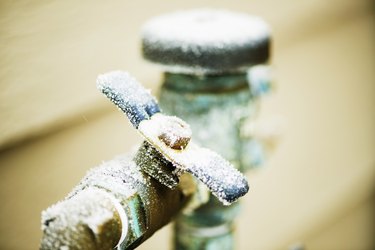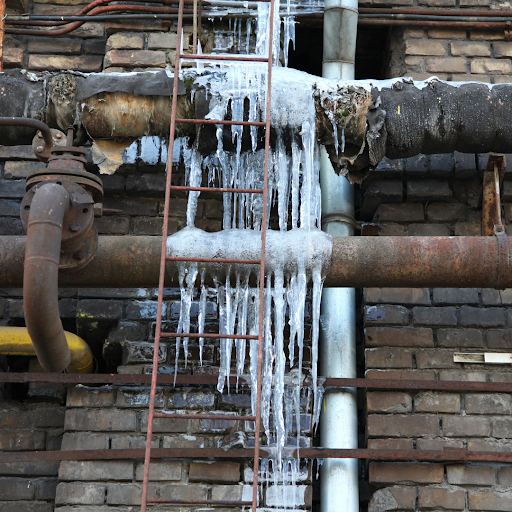Important Tips to Prevent Frozen Pipes in Winter
Important Tips to Prevent Frozen Pipes in Winter
Blog Article
Just about every person is bound to have their own perception in relation to How to prepare your home plumbing for winter weather.

Cold weather can wreak havoc on your plumbing, particularly by freezing pipelines. Below's just how to stop it from occurring and what to do if it does.
Intro
As temperature levels decline, the danger of frozen pipelines rises, potentially resulting in pricey repair work and water damages. Comprehending exactly how to prevent icy pipelines is critical for homeowners in chilly climates.
Avoidance Tips
Protecting vulnerable pipelines
Wrap pipelines in insulation sleeves or use warmth tape to safeguard them from freezing temperature levels. Focus on pipes in unheated or external areas of the home.
Home heating strategies
Keep indoor areas sufficiently warmed, especially locations with pipes. Open cabinet doors to allow cozy air to circulate around pipelines under sinks.
How to determine icy pipelines
Seek decreased water flow from faucets, unusual odors or noises from pipes, and visible frost on exposed pipes.
Long-Term Solutions
Structural modifications
Think about rerouting pipes away from exterior wall surfaces or unheated areas. Add extra insulation to attic rooms, cellars, and crawl spaces.
Updating insulation
Purchase top notch insulation for pipes, attics, and wall surfaces. Appropriate insulation aids keep constant temperatures and reduces the threat of frozen pipelines.
Safeguarding Exterior Plumbing
Yard hoses and outdoor faucets
Separate and drain yard tubes before winter. Set up frost-proof faucets or cover exterior faucets with shielded caps.
Understanding Icy Pipes
What triggers pipes to ice up?
Pipes ice up when exposed to temperature levels listed below 32 ° F (0 ° C) for extended periods. As water inside the pipelines ices up, it increases, putting pressure on the pipe walls and possibly creating them to break.
Threats and damages
Frozen pipes can result in water system interruptions, building damage, and costly repair work. Ruptured pipes can flooding homes and trigger considerable structural damages.
Indicators of Frozen Piping
Recognizing icy pipes early can prevent them from bursting.
What to Do If Your Pipelines Freeze
Immediate activities to take
If you think frozen pipelines, keep taps open up to eliminate pressure as the ice thaws. Use a hairdryer or towels taken in hot water to thaw pipelines slowly.
Verdict
Stopping frozen pipes calls for positive measures and quick reactions. By recognizing the reasons, indications, and safety nets, property owners can secure their plumbing during winter.
5 Ways to Prevent Frozen Pipes
Drain Outdoor Faucets and Disconnect Hoses
First, close the shut-off valve that controls the flow of water in the pipe to your outdoor faucet. Then, head outside to disconnect and drain your hose and open the outdoor faucet to allow the water to completely drain out of the line. Turn off the faucet when done. Finally, head back to the shut-off valve and drain the remaining water inside the pipe into a bucket or container. Additionally, if you have a home irrigation system, you should consider hiring an expert to clear the system of water each year.
Insulate Pipes
One of the best and most cost-effective methods for preventing frozen water pipes is to wrap your pipes with insulation. This is especially important for areas in your home that aren’t exposed to heat, such as an attic. We suggest using foam sleeves, which can typically be found at your local hardware store.
Keep Heat Running at 65
Your pipes are located inside your walls, and the temperature there is much colder than the rest of the house. To prevent your pipes from freezing, The Insurance Information Institute suggests that you keep your home heated to at least 65 degrees, even when traveling. You may want to invest in smart devices that can keep an eye on the temperature in your home while you’re away.
Leave Water Dripping
Moving water — even a small trickle — can prevent ice from forming inside your pipes. When freezing temps are imminent, start a drip of water from all faucets that serve exposed pipes. Leaving a few faucets running will also help relieve pressure inside the pipes and help prevent a rupture if the water inside freezes.
Open Cupboard Doors
Warm your kitchen and bathroom pipes by opening cupboards and vanities. You should also leave your interior doors ajar to help warm air circulate evenly throughout your home.

As an enthusiastic reader on How To Avoid Freezing Pipes, I was thinking sharing that article was really useful. Do you know about somebody else who is involved in Preventing and dealing with frozen pipes? Please feel free to promote it. I appreciate your readership.
Click Here To Read More Report this page